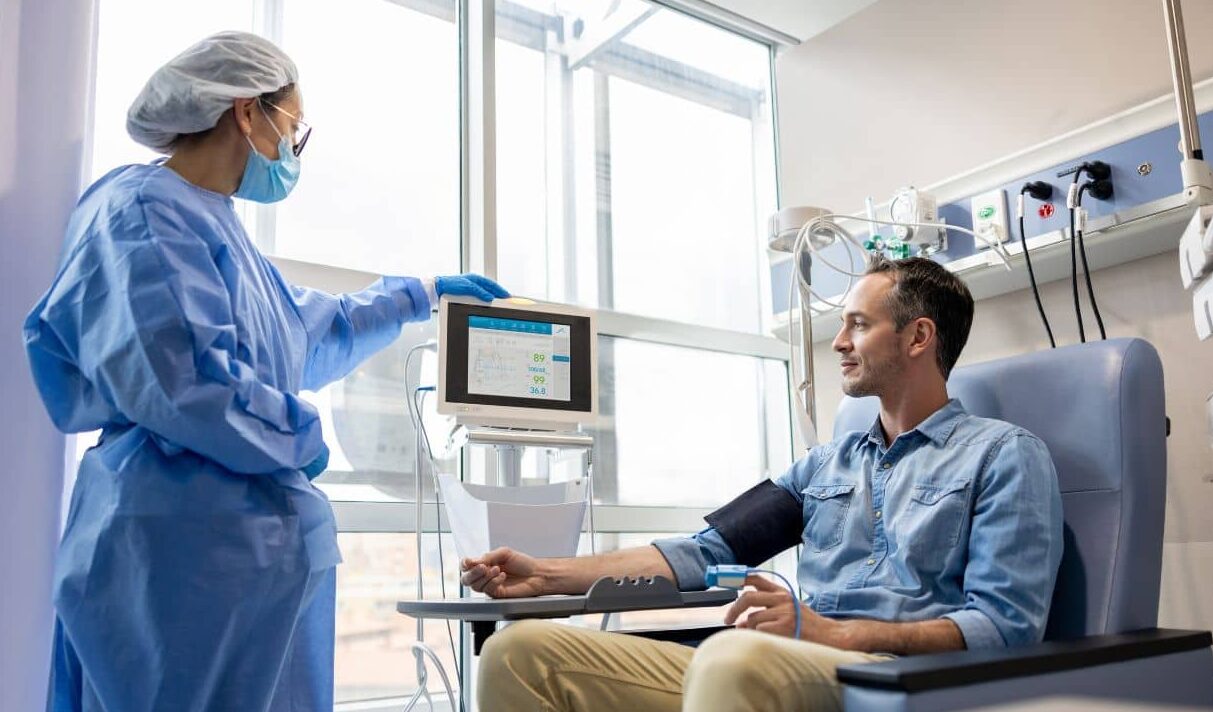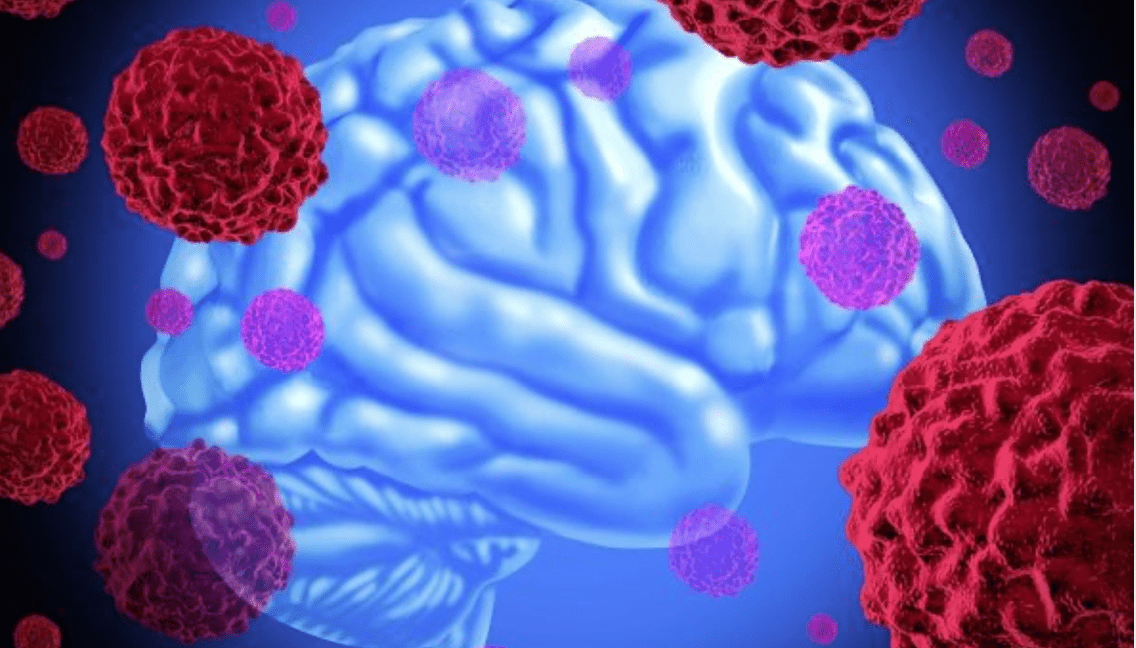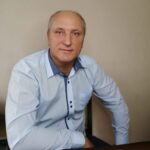-
 News
When glucose levels are low, chemotherapy ceases to affect cancer cells
News
When glucose levels are low, chemotherapy ceases to affect cancer cells
-
 News
Excessive treatment of prostate cancer in older men may reduce quality of life without increasing its duration
News
Excessive treatment of prostate cancer in older men may reduce quality of life without increasing its duration
-
 News
Brain cancer can be cured by viruses
News
Brain cancer can be cured by viruses
-
 News
Ways to reduce lymphatic pain in breast cancer have been found
News
Ways to reduce lymphatic pain in breast cancer have been found
-
 News
Scientists have turned bacteria into a powerful weapon against cancer
News
Scientists have turned bacteria into a powerful weapon against cancer
All news
Benign prostatic hyperplasia (BPH) treatment
Prostatic hyperplasia, also known as prostate adenoma , is an overgrowth of the gland`;s tissues. The reason for this is a physiological decrease in testosterone. This condition occurs in 20% of patients aged 40 years and in 70% of patients aged 80 years.
Prostate hyperplasia is benign, however, 80% of prostate cancer cases originated from prostate adenoma.
This condition can often be asymptomatic, even in the case of large hyperplasia.
Manifestations of prostatic hyperplasia are experienced only by:
- 26% among patients aged 50 to 60 years,
- 33% of patients aged 60 to 70 years,
- 41% of patients aged 70 to 80 years,
- 46% of patients over 80 years of age
MedTour patients recommend clinics for the treatment of benign prostatic hyperplasia (BPH):
Doctors for the treatment of benign prostatic hyperplasia (bph)
Frequently Asked Questions
There are three main stages:
- In the first stage, there is a slight increase in urination, mainly at night, and lethargy of the urine stream. As a rule, men do not pay much attention to the change in the state of health at this stage. The duration of this period is individual, can range from a year to 10 −12 years.
- In the second stage, all the symptoms listed above are observed. At this time, as a rule, patients turn to a doctor for diagnosis and treatment. At a later stage of the second stage, a burning sensation may appear when urinating and in the suprapubic region, pain in the lower back.
- In the third stage, there is urinary incontinence, and it is released involuntarily, which leads to the need to use a urinal. Occurs rarely.
- The most dangerous thing is the transition to prostate cancer — the probability of this is 20%;
- Cystitis;
- Diverticulitis of the bladder (the appearance of protrusions in the wall of the bladder);
- Acute urinary retention;
- Formation of stones in the bladder;
- In rare cases, the development of renal failure.
Absolutely not. Prostatic hyperplasia is an increase in the volume of the prostate gland, which develops earlier or later in almost all men, with the exception of isolated cases. Indeed, cancer can arise from this condition, so in no case should you neglect preventive visits to the doctor and passing an analysis for prostate-specific antigen.
But, at the same time, more than half of the cases of prostate adenoma are completely asymptomatic, and the rest can be easily and quickly cured if you seek medical help at an early stage.
- The main reason is the presence of a Da Vinci installation. Unfortunately, without the Da Vinci robot, it is impossible to achieve such indicators of improving erections and increasing the tone of the bladder as with robot-assisted surgery.
- Possibilities of rehabilitation after surgery. Also related to the possibility of performing surgery on a da Vinci robot, but also related to the approach to surgical patients abroad.
- The usual time of hospitalization is up to two days, rehabilitation measures up to a week. After that, the patient returns to normal life without pain and urological symptoms.
- The availability of modern methods such as cryotherapy, microwave coagulation and transurethral needle ablation, which allow for the operation of removing prostate adenoma in the most non-traumatic way with a small size of the adenoma.
What types of diagnosis of prostatic hyperplasia
- Clinical. The presence of two or more symptoms suggests the presence of prostatic hyperplasia;
- Finger examination of the prostate gland-helps to understand whether there are denser areas in the gland that may be signs of prostate cancer and mean that further examination should be referred to an oncologist,
- Ultrasound. For the diagnosis of prostatic hyperplasia, transrectal ultrasound is mainly used. Its use can be unpleasant, however, this method allows you to give an accurate assessment of the prostate gland, the degree of hyperplasia and the danger from the point of view of malignant degeneration. Sometimes prostatic hyperplasia can also be assessed by abdominal ultrasound, but this applies to relatively late stages of hyperplasia;
- General urinalysis to see if there are signs of cystitis;
- Uroflowmetry is a study that shows the flow rate of urine. Experienced doctors use this method to find out how much prostate adenoma narrows the urinary ducts;
- Contrast pyelography — intravenous contrast is injected and an X-ray of the kidneys and the urinary tract exiting them is performed, this method is used to assess the patency of the urinary tract;
- Cystoscopy-determination of the patency of the urethra and the state of the bladder by inserting a special device-a cystoscope into the bladder cavity;
- Urodynamic examination-determination of the volume velocity of urine by introducing special pressure sensors and a device called a uroflorometer into the bladder and rectum. A saline solution is injected into the bladder and the patient is asked to urinate on a special device — a uroflurometer. This is a complex and unpleasant for the patient, but accurate method, used before plastic surgery on the sphincter of the bladder and urinary ducts;
- Blood test for prostate-specific antigen (PSA) — allows you to very accurately determine the presence of prostate cancer;
- Biopsy-taken during a transrectal examination in the presence of suspected prostate cancer formations.
How to treat prostate hyperplasia in the best foreign clinics
Not all forms of prostate hyperplasia require treatment. If the degree of hyperplasia corresponds to the age of the patient, there are no signs of malignancy, and the patient’s quality of life does not suffer, medical care in this matter is limited to regular examinations by a urologist.
Non-surgical treatment of prostatic hyperplasia
In the early stages of the disease, drug treatment is possible. There are no drugs that directly treat prostate hyperplasia, but drugs such as alpha-blockers and 5-alpha-reductase inhibitors help to relax the smooth muscles of the prostate and bladder and reduce symptoms.
Surgical treatment of prostatic hyperplasia
The most frequent and effective is surgical treatment. It can be performed using open or laparoscopic surgery — these methods can be used in very elderly men or in advanced forms of the disease, as they can have a negative effect on the erection.
Modern methods of treatment of prostatic hyperplasia
Transurethral resection is the gold standard in prostate removal. An experienced surgeon of a foreign clinic performs the procedure with endoscopic access through the urethra without incisions, which practically does not cause pain. The disappearance of symptoms of prostatic hyperplasia occurs 1-2 days after surgery. The best results in terms of maintaining potency and restoring functions (the tone of the bladder, the absence of
fibrous changes in the urinary tract) are given by operations on the da Vinci robot.
Holmium-laser enucleation of the prostate (HoLEP). Removal of abnormal prostate tissue using a laser. Under the influence of the laser, the tissues are fragmented, and then removed by a special moderator. It is used for non-surgical removal of the large prostate gland.
Embolization of the prostate arteries — gluing the arteries so that the surrounding tissues can not grow and develop. It is used rarely, if it is impossible to remove all the pathological tissues and it is necessary to reduce the symptoms at the same time.
Published:
Updated:


Information on this webpage verified by the medical expert








